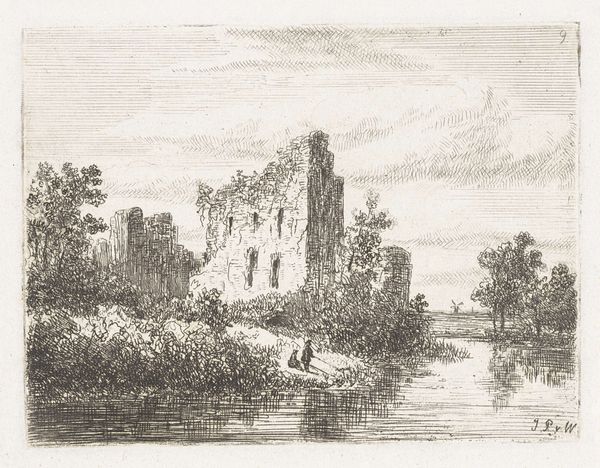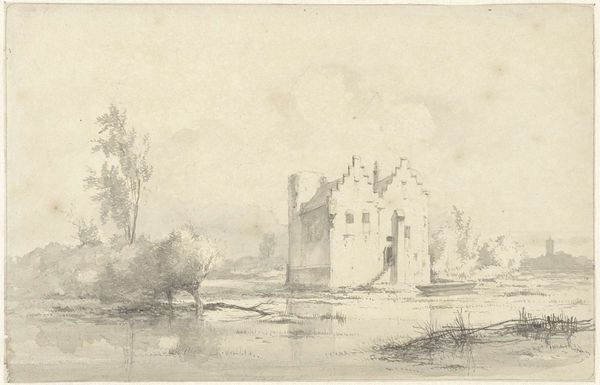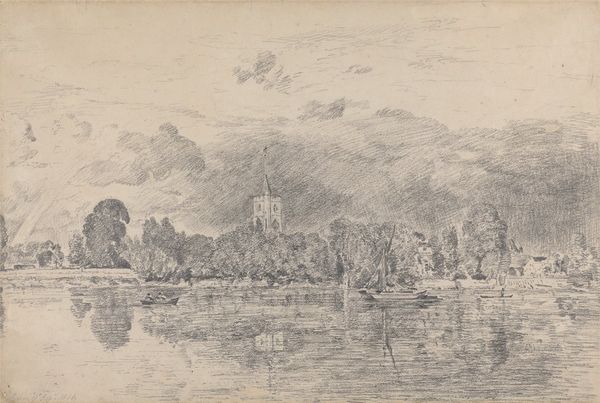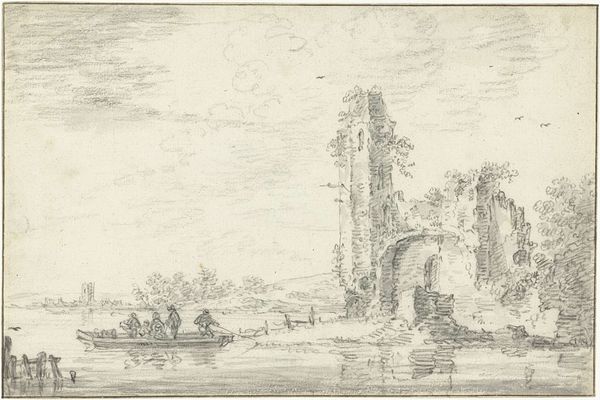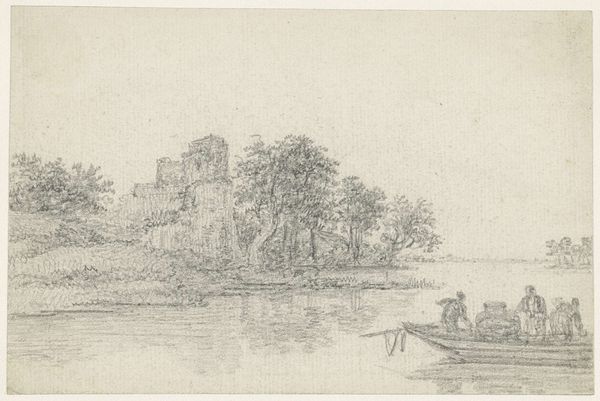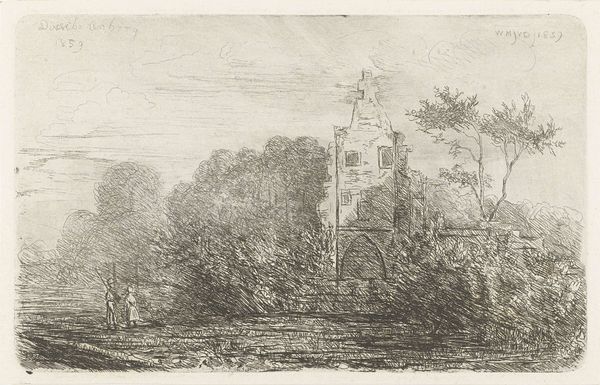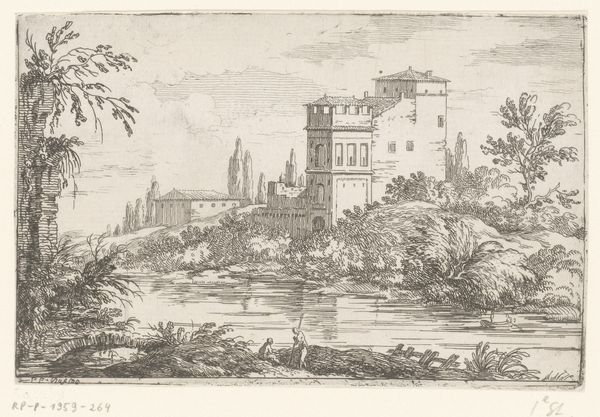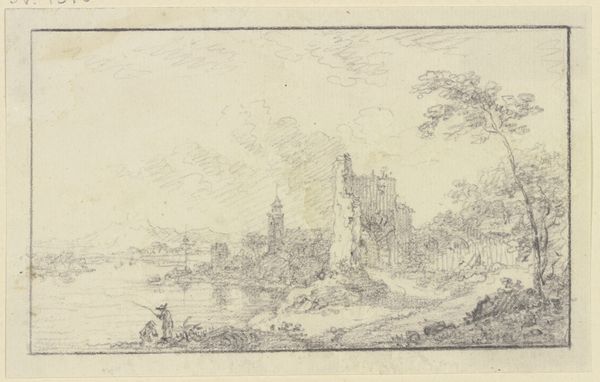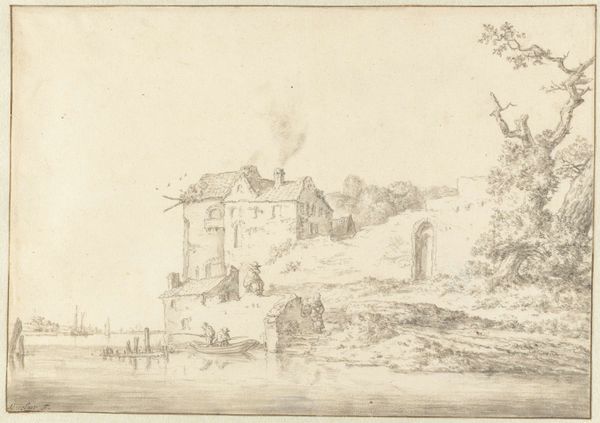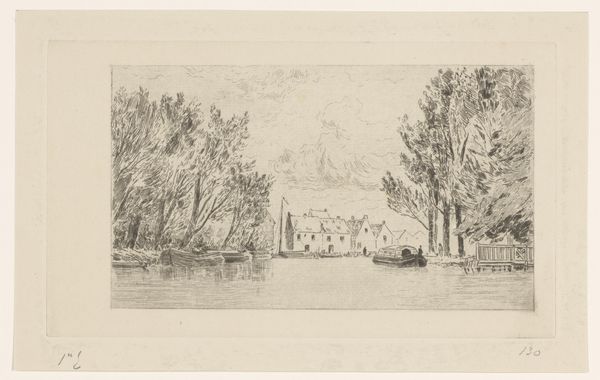
Dimensions: height 93 mm, width 123 mm
Copyright: Rijks Museum: Open Domain
Johannes Pieter van Wisselingh created this etching of a riverside ruin in the Netherlands at an unknown date. The image encapsulates a Romantic sensibility, finding beauty in decay, but it’s also worth thinking about the ruin as a potent symbol in Dutch culture. In the 19th century, the Netherlands was coming to terms with its own history, including a glorious past as a major European power. The ruined castle in this print reminds us of that past, but more importantly, it reflects the idea of the Netherlands as a nation that has endured through centuries of change and upheaval. Wisselingh probably made the print as part of a series. Artists at that time would sell prints like this to tourists who wanted a memento of their visit. Understanding the social life of images can offer insights into the way that Dutch identity was constructed and marketed in the 19th century. To find out more, we can consult museum archives, art market records, and historical studies of Dutch nationalism.
Comments
No comments
Be the first to comment and join the conversation on the ultimate creative platform.
